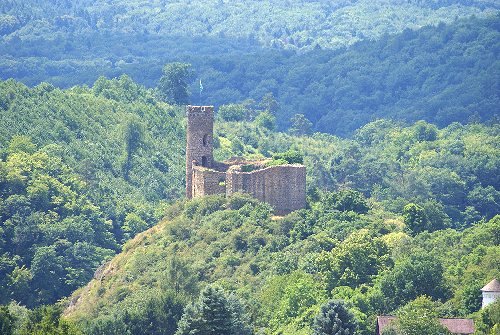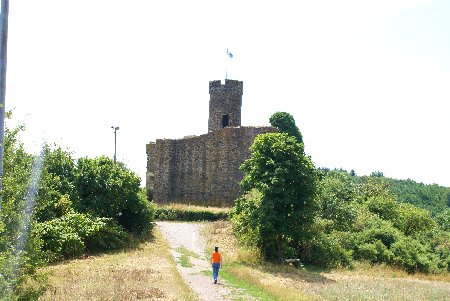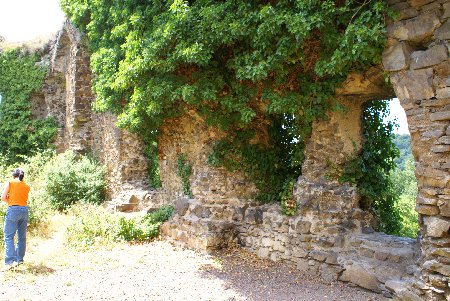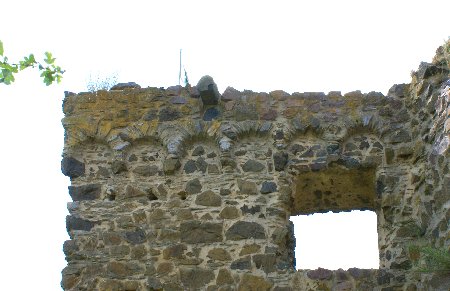Aardeck
Aardeck is not too elaborate of a ruin, but it is unique because few ever visit it.







There is very little information available on this castle. I have found that it was built in the late 1200s or early 1300s. The first mention of the castle was in 1395 in the writings of Tileman Elhen von Wolfhagen. It is possible that the castle was used by local nobles to counter the rising power of the Katzenelnbogen family who controled the town of the same name, along with castles like Katz and Rheinfels on the Rhein River. From 1467, the castle was held by the von Diez family. By 1727, the family line had died out and the castle became a ruin through neglect. Today the castle is owned by the town of Holzheim.
Three views of Aardeck. Above, from the hills looking to the northwest. Left, a view from the high ground behind the castle looking south. Below, an opposite view from the picture above.
Access to Aardeck takes a modest amount of work. The castle is located by the town of Holzheim, near Limburg an der Lahn. Travel to Limburg and then head south into Diez. From there, take the 54 towards Holzheim. You must then drive into Holzheim and park along the streets to the north of the castle. The Schone Aussicht (Beautiful View) is a residential back street that is a good place for parking. Once you park, hike down the road and you will see a trail to the right. Once you exit the woods you can see the castle to the left.
The photo at left shows the trail going to Aardeck. It appears that at one time cars were allowed to park at the base of the castle, but this is no longer the case.
While Aardeck is a ruin, some aspects are of real interest. And because very little reconstruction work has been done you can see the authentic structure. Since very little expansion work was done after construction, much of what is extant dates to the 1300s, or over 700 years.
The nature of the structure implies a debris field in the inner ward, as the windows are too low to the ground.
Some of the castle's structure shows some flair of design. The walls still sport the inverse crenelation to support upper floors.